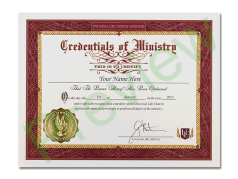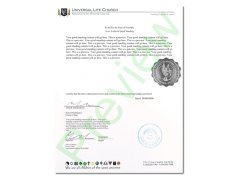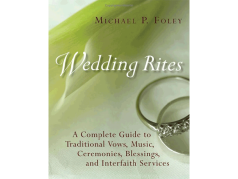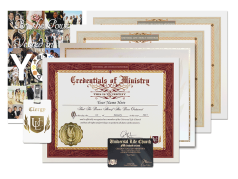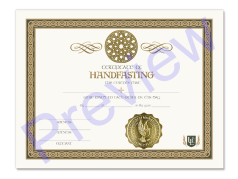What Is a Handfasting Ceremony?

Many modern couples are turning to unity rituals in their wedding as a fun and unique way to physically symbolize their emotional connection. Some choose to pour sand into a single container, and others even take a shot together! The unity ritual that is easily the most famous, however, is handfasting.
You’ve heard of “tying the knot”, but did you know that that ubiquitous phrase comes from this ceremony? Handfasting is an ancient ceremony where a couple’s hands are tied together with rope or cord, symbolizing their unity.
Originally, this was rarely used in modern times outside of Wiccan or pagan wedding ceremonies. But it’s gained popularity in the last decade in everything from weddings, to vow renewals, to commitment ceremonies, across all faith traditions.
But what is handfasting? Where did it come from, and what is its history? And how do you perform one? This handfasting guide is here to help you.
What Is Handfasting's History?
Handfasting has a long history. The practice dates back as early as 7000 B.C. in the British Isles, where it was often used to symbolize a temporary betrothal. Couples would be temporarily wed for a year and a day, after which they could decide to fully commit to one another or walk away from the arrangement. As time went on, the symbolic tying of the hands became a central piece of the wedding ceremony.
Thousands of years later, handfasting is still used in a wide variety of weddings, and is enjoying renewed popularity. Some couples choose it for its historical value, particularly neopagan couples like followers of Wicca. But many nonpagan couples also utilize handfasting in their wedding ceremony simply because they enjoy the symbolism of intertwining their lives with the tying of a knot.
What Does Handfasting Mean?
At its core, handfasting is the symbolic representation of a couple’s commitment to one another. The ceremony carries with it a variety of symbolic elements, including:
- Unity and Connection: The primary symbolism of handfasting is unity. The colorful cords or ribbons, crafted from various materials, illustrate the merging of two separate lives into one. Just as the cords intimately intertwine, so do the lives and futures of the couple.
- Eternity and Continuity: The loop or knot created during the binding ceremony represents eternity. It forms an endless, unbroken circle, similar to a wedding ring, which signifies an enduring love and commitment meant to last throughout the couple's lives.
- Strength and Support: The act of binding hands also conveys an unwavering strength and support of one another. The cords symbolize the strength the couple draws from each other. United, they are stronger together than apart, indicating their union will provide mutual support and resilience against life's challenges.
- Sacrifice and Compromise: Binding hands also reflects the sacrifices and compromises inherent in a committed relationship. It represents the couple's willingness to meet the responsibilities and face the challenges that come with marriage head on.
What Do You Need for a Handfasting?
To perform a handfasting, you’ll need three things: a handfasting script, a handfasting cord, and a handfasting certificate.
-
1. Handfasting Ceremony Script
Because handfasting is probably an unfamiliar concept to at least a few wedding guests, you’ll need a handfasting script to explain the symbolism and meaning of the ceremony.
The officiant typically walks through the ceremony and its symbolism, including a blessing or speech while binding the couple’s hands together. Feel free to browse our handfasting ceremony script page for inspiration.
-
2. Handfasting Cord
One of the most important parts of handfasting is the handfasting cord! Cords, ropes, and ribbons are the most frequently utilized handfasting materials, but anything comfortable and tieable would work. You may consider using some of these popular accessories in your binding as well:
- Natural garland
- Vines
- Shells
- Beads
- The couple’s engagement rings
- Heirloom charms or rings
- Family birthstones
- Woven flowers
If you’re creating your own cord by cropping or braiding an existing rope, you’ll want to ensure that the cord is slightly more than one yard in length so that it can comfortably be woven around the couple’s hands several times.
Many also choose to purchase pre-cut handfasting cords to remove all of the guesswork. Consider our wedding handfasting cord, available in our online store!
-
3. Handfasting Certificate
Many handfasting officiants also like to give the couple a beautiful handfasting certificate after the ceremony is completed. This multi-purpose certificate is fitting for any service where a handfasting was performed, including weddings, vow renewals, and commitment ceremonies. A handfasting certificate signed by the couple and their officiant is a beautiful keepsake the couple will cherish forever.
How to Perform a Handfasting
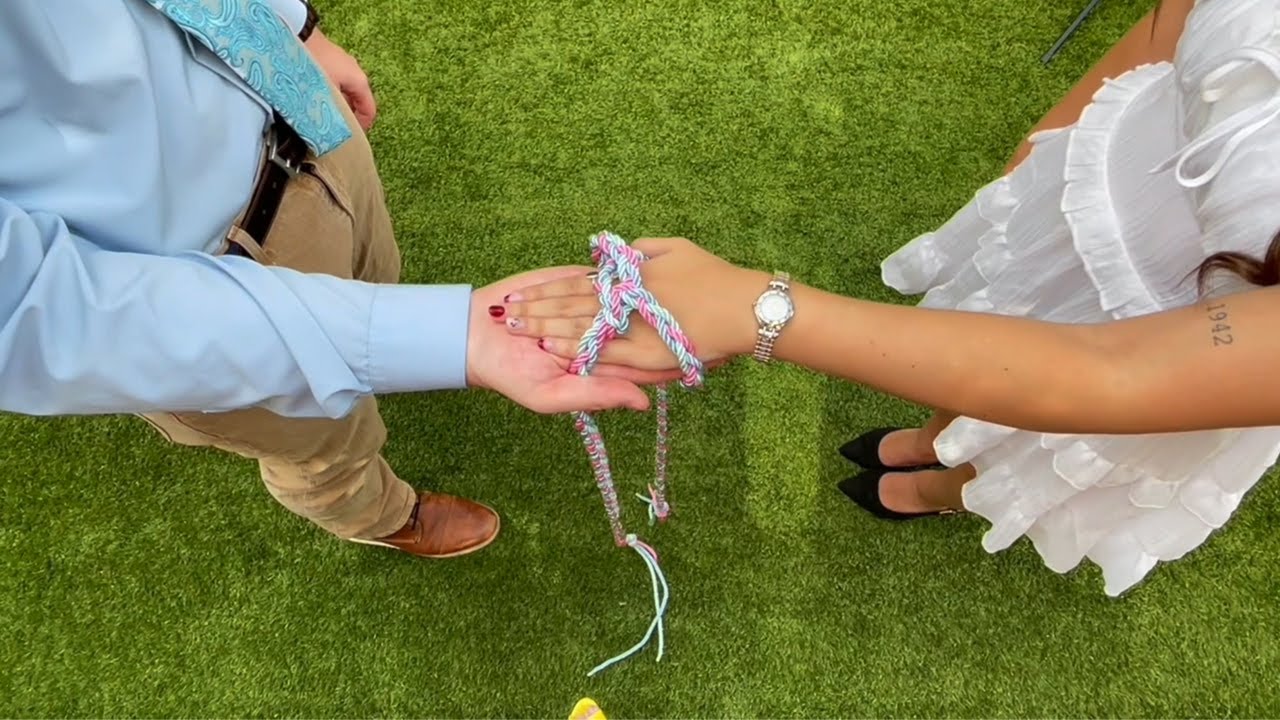
Now that you’ve got all the necessary supplies, it’s time to actually perform the handfasting! What sets this ceremony apart from others is the fasting of the hands, so the first step is having the couple link hands, right hand to right hand, left hand to left hand.
This symbolizes the couple uniting as one and intertwining their lives, the figure eight that emerges a symbol of their infinite love and commitment.
Typically, the minister will then wrap the handfasting cord in a figure-eight pattern over the couple’s hands 3, 6, or 9 times. Sometimes an assistant helps the officiant wrap the handfasting cord, so if that is the case then one figure eight per person is suitable.
Though the ancient practice was for the couple to remain bound much longer, the couple will probably only want to remain bound together until the reception. Safety first!
A very popular variation on the handfasting ceremony is the infinity knot, where the cord is tied in such a way that when the couple slips their hands out and it is tightened, a literal knot forms in the center. We’ve put together a video on how to tie the infinity knot if that sounds appealing to you!
Is Handfasting a Legal Marriage?
Handfasting in and of itself does not legally constitute a legal marriage. Rather, it is a symbolic ceremony often used as part of a legal wedding ceremony. For the wedding ceremony to be considered legal, you’ll need to include other important elements in your wedding script to meet the government’s legal requirements. If you include these simple elements alongside your handfasting, and so long as the wedding is performed by a legally ordained minister, the wedding will be legal!
These days, it is quite common for both pagan and non-pagan couples to utilize handfasting in their wedding ceremony. Beyond weddings, it’s also gaining traction in vow renewals, anniversaries, and commitment ceremonies as well!
What Does a Modern Handfasting Look Like?
Handfasting is a tradition thousands of years old, so naturally it has changed somewhat since its creation. In the 21st century, many couples enjoy modernizing the ceremony to make it more personal.
One such new tradition has a parent of one of the nearlyweds perform the handfasting in a twist on the traditional giving away the child at the altar. And another new tradition has any important children in the couple’s families perform the handfasting instead, each child wrapping their own figure eight around the couple’s hands with the same cord.
How ULC Ministers Approach Handfasting
Because of their strong interfaith tradition, Universal Life Church ministers are often asked to perform handfasting ceremonies for friends and family members hoping to tie the knot - literally. As a legally ordained minister, you are not only able to perform handfasting ceremonies, but also able to legally marry the couple together in the eyes of the law. And if you aren’t a ULC minister yet, you can become one for free simply by filling out our ordination application online!
